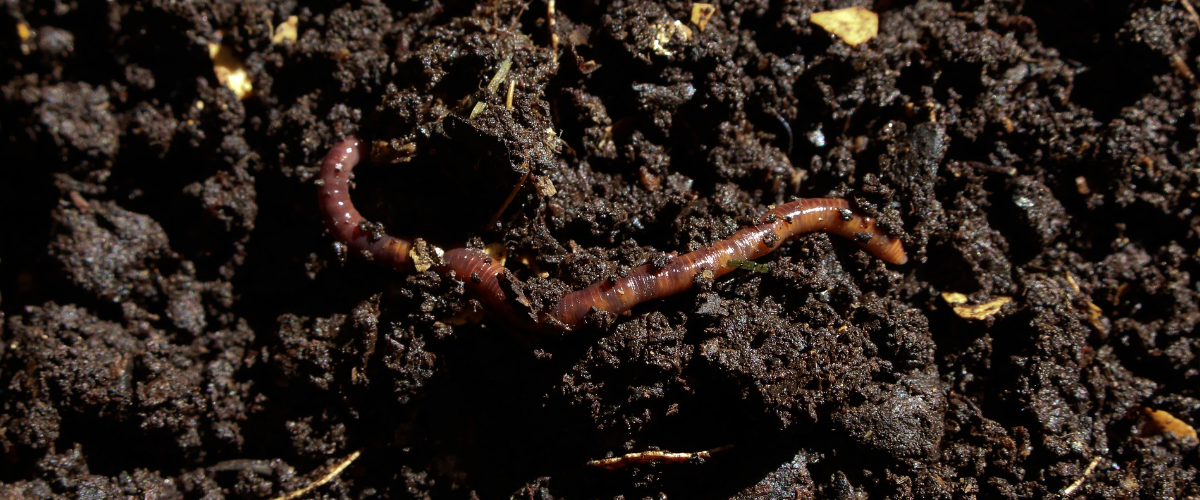Composting is a core gardening skill. Whether you’re just a home garden hobbyist or a prepper who makes the most of their land, knowing how to compost well can mean a world of difference in soil quality. Or maybe you’re simply a fisherman wanting worms. Either way, here’s everything you need to know about the relationship between worms and composting.
In general, there are two ways to compost. One is done using natural decomposition and the other is done with worms. The latter is often called vermicomposting. When worms are present in the compost, they can dramatically aid the rate that food scraps and other materials are broken down into nutrient rich soil. This process, while generally easy, is still a bit more complicated than standard composting. You need the right worms, the proper PH balance, temperature, and more.
But let’s take it one step at a time.
The Worms
You don’t NEED a specific type of worm to compost with. Most will do the trick. But some worms are better at it than others, while some can act as signs that the compost mixture is off and should be adjusted.
The most common composting worm is the Red Wiggler. They are often sold in stores for the express purpose of being used in vermicomposting. If you have them, great. If you don’t, you should get some.
There’s a chance you will find something else. They’re smaller, white worms that are thinner than average. Some people think they are baby worms, but they are actually known as Pot worms. If you find them in your compost, don’t worry, they’re harmless. Like any worm, they convert compost and aerate soil.
One thing to note, however, is that pot worms and red wigglers seldom thrive in the same soils. So if you see pot worms, it can be a sign that you should adjust your composting habits to better allow for the wigglers.
What about the not-worms? One common thing people find in compost are actually maggots. The larva form of most flies, maggots are short, white/brown wriggling creatures. Commonly associated with rot, most folks don’t like them one bit. While not harmful to compost, maggots can indicate that there is too much nitrogen in the compost and not enough carbon. If you’re familiar with composting terms, this means too much “green” and not enough “brown.” It can also happen when you don’t rotate your compost often enough.
Maintaining a Balance
If you want the ideal vermicompost, then you need to maintain a certain balance in the soil/scraps. This includes a proper green/brown mix, a good PH level, and not having too many worms.
If left unchecked, the worms can outgrow your compost bin. This can lead to over processing and overpopulation, which then can starve out the worms. Nature is fickle like that. If you suspect that you have too many worms, then remove them! You can, of course, just dig them out and collect them by hand. Some folks simply remove some compost, worms included, and add it to their garden, every few months. They then replace the space with new composting material.
Don’t forget to turn your compost regularly. This helps aerate the compost. When not aerated, it can become difficult for worms to thrive, while inviting unhelpful pests. This also creates a heat issue. Decomposition creates heat, which can really build up. This can result in unlivable temperatures for the worms. Regular flipping can prevent this. You can make this easier by investing in a rotating compost bin. Relatively cheap, they let you roll a container around for easy flipping.
Next in line is moisture. Too dry, and no decomposition happens. Too wet and it becomes unlivable for worms. Only slightly too wet and it becomes an infestation ground for too many pests. You can tell if it’s too wet when worms collect at the top of the pile to escape the pooling water. You can offset this by draining it and avoid watering it for a week or two. You can also add more dry carbon material to dry it out more. If you have an outdoor compost section, covering it with a tarp can help.
We keep mentioning the PH balance. But what about it? If you have too many worms, or too many maggots. Try adding in things like lime, phosphorus, wood ashes, or eggshells to the compost. Our favorite, personally, is coffee grounds.
If you continue to have maggot and fly issues, this can be reduced by keeping it covered/closed. Compost needs airflow, however. So a closed container isn’t ideal. We suggest using airy meshes. Just make sure it is small enough that flies can’t get through.
It sounds like a lot of work. But in the overall scheme of things. It’s not much. Just keep that green/brown balance, keep it from being too wet, and flip it sometimes. And before you know it, you’ll have just the right amount of worms to make loamy, nutrient rich compost.

